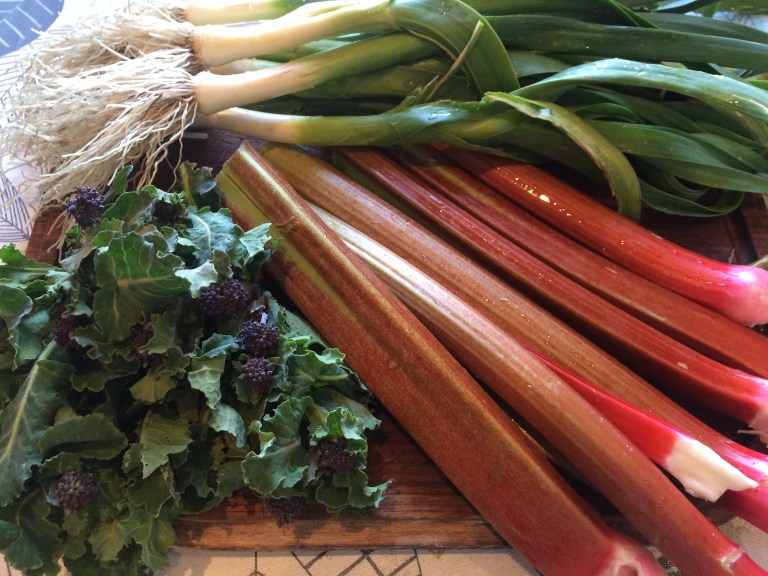Like all areas of my life, I have a to do list for my allotment which I never complete. It is never finished, and at the end of each week I roll it over to the next, adding new things to be done according to the changing weather and season, ticking things off as I go, but always fretting that there are more things to do than I have time for. And then there is the stubborn item which stays on the to do list for months – it has more staying power than the bindweed that I keep finding in my beds and paths even when I think I have tackled the last of the fleshy white root. For more than a year, the item “Dig up paths and order woodchip” has been stuck fast, normally at the top of the list (as if that were ever going to get me to tackle it), but it has been ignored because other more urgent, seasonally time sensitive tasks needed addressing.
My plot is laid out like a potager, with a maze of paths running in different directions. It was partly like this when I inherited it, but I loved the idea of a patchwork rather than straight, uniform beds, so I made more paths, including one around a central bed. This looks pretty, but it also means deep-rooted couch grass, creeping cinquefoil and that wretched bindweed has been allowed to run rampant in a network of neglect while I have concentrated on what’s growing in the beds in between.

Last year, while judging Britain’s Best Allotment competition, I saw how a lot of the finalists had used woodchip on their paths to great effect. The woodchip seemed to tie the whole plot together and looked very beautiful. Since then, I have written “Dig up paths and order woodchip” on my to do list, and every week as it has rolled over. I have just never got round to it actually digging the paths and ordering the woodchip.
So much of gardening is about serendipity. Last week, on a day when it was pouring with rain, I stared at my weedy paths and decided I really needed to get on and order the woodchip – at least this would give me a deadline to get digging. But then, at the other end of the site, a large poplar tree on our site was being pollarded. The branches produced a huge pile of woodchip for anyone on our site to use. I couldn’t put it off any longer – if I wanted neat, attractive paths I had to dig out my weeds before all the woodchip disappeared.

It would have been easy to simply dump the woodchip on top of the paths as they were, but the weeds would quickly grow through. Everything needed to be dug up – including the dense, thick couch grass – and composted.

Next, I laid a thick weed suppressant membrane along the paths to stop weeds regrowing. This will also slow down the decomposition of the woodchip – if it were just placed on top of the soil it would rot down within a season. Using the membrane should keep it drier and in tact for two to three years.

Finally, I poured barrowfuls of woodchip, about two inches deep, along the paths. After three days of exhausting digging, wrenching out some very deep-rooted perennial weeds, this part was very satisfying.

In this picture above, you can see the undug path – thick with grass – in the background and the newly laid woodchip path in the foreground. My colourful strawberry pots show up well against the chippings.

As an added bonus, woodchip is excellent for literally stopping slugs and snails in their tracks – they hate the dry, coarse texture on their slimy undersides. By contrast, the muddy grass paths were havens for these destructive pests, giving them cover to lurk until they make a break for my lettuces.

I sat on my foldaway chair and looked at my handiwork – it was just as well we had two clear sunny days or else laying the woodchip would have been messy work.

I love taking photos of rhubarb. It is such a beautiful, vivid plant. But all the more striking when cut and laid out on my new paths.

After all that hard work I rewarded myself with a harvest of rhubarb, purple sprouting broccoli and the last of the leeks. But most importantly of all, I was able to put a very satisfying tick against “Dig up paths and order woodchip” on my to do list. Now on to all of the other tasks…

2 thoughts on “Mulch To Do About Nothing”